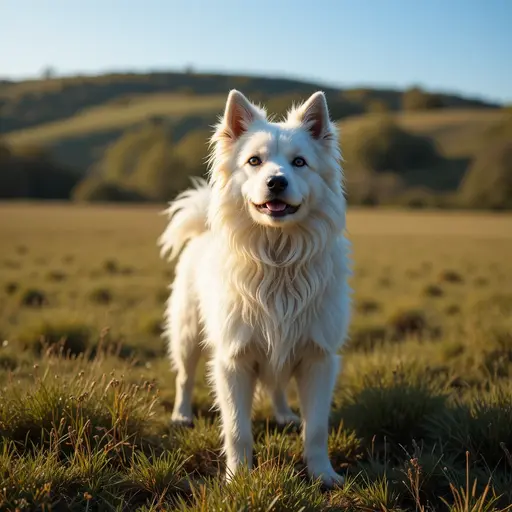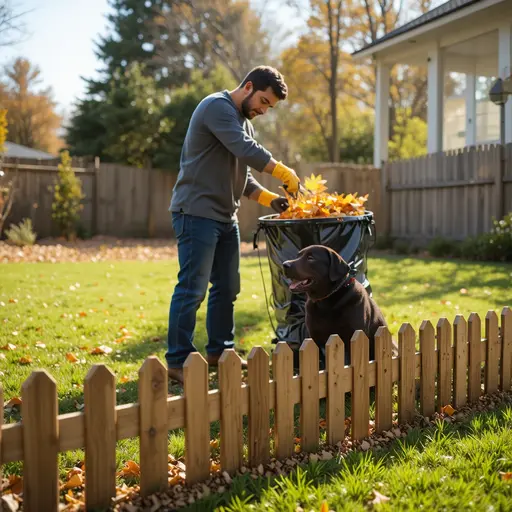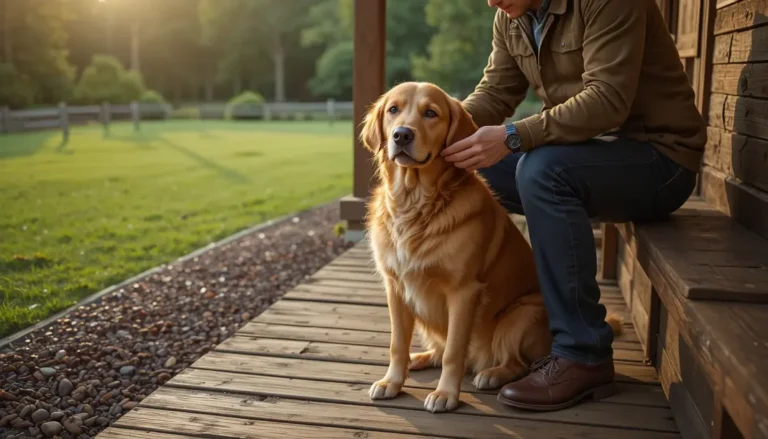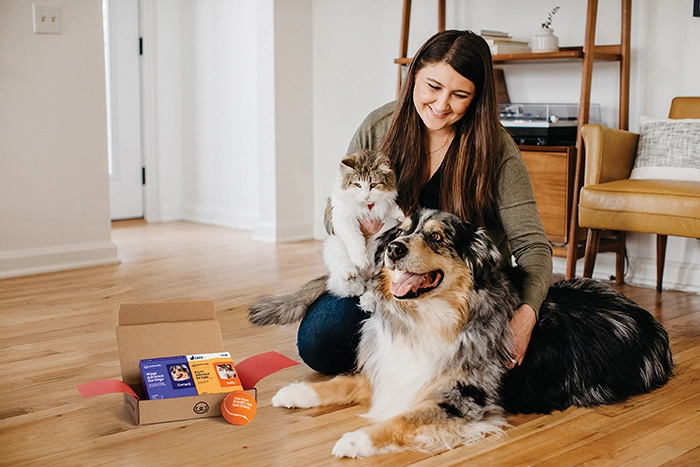No dog breed is truly immune to ticks, but certain breeds with dense double coats—like Siberian Huskies and Alaskan Malamutes—may provide slightly better natural barriers against tick attachment. Real protection comes from consistent prevention, not genetics.
Understanding what “tick resistance” actually means helps you make informed decisions about your pet’s health.
This guide explores the science behind breed differences, identifies which dogs might have slight advantages, and provides proven strategies to keep any dog safe from Lyme disease and other tick-borne illnesses.
What “Tick-Resistant” Really Means
The term “tick-resistant dog breeds” is misleading. No scientific evidence supports the existence of any breed with biological immunity to tick bites or the pathogens they carry. However, certain physical and behavioral traits can create relative advantages that reduce tick exposure or attachment success.
Veterinary parasitologists emphasize three factors that influence a dog’s real-world tick risk:
- Coat density and length – Thick, double-layered coats make it harder for ticks to reach the skin
- Grooming behavior – Dogs that frequently self-groom may dislodge ticks faster
- Activity patterns – Breeds that stick to open trails vs. dense underbrush face different exposure levels
Dr. Susan Little, a veterinary parasitology expert at Oklahoma State University, notes that “while breed-specific immunity to tick-borne diseases hasn’t been documented, individual variation in immune response to infection does exist.”
This means some dogs may fight off infections more effectively once exposed, but this is an individual trait—not a breed characteristic.

The Science Behind Ticks and Canine Genetics
Tick resistance isn’t about the dog’s DNA resisting ticks—it’s about reducing opportunities for attachment and optimizing early detection.
Research published in the Journal of Veterinary Internal Medicine shows that tick-borne disease susceptibility relates more to geographic location, seasonal exposure, and preventive care consistency than to breed.
That said, a 2022 study from the University of Florida identified interesting patterns in tick attachment success rates across coat types:
- Short, smooth coats: 68% attachment success for questing ticks
- Medium, wiry coats: 52% attachment success
- Long, dense double coats: 41% attachment success
The mechanism is simple physics: more hair follicles per square inch create physical barriers, and the air pockets in dense undercoats may interfere with a tick’s ability to sense heat and carbon dioxide signatures.
Individual Immune Response Variation
Once a tick transmits bacteria like Borrelia burgdorferi (Lyme disease), a dog’s immune system determines whether clinical disease develops.
German Shepherd Dogs and Labradors appear disproportionately represented in Lyme nephritis cases, but this likely reflects popularity and outdoor lifestyle rather than genetic susceptibility.
Golden Retrievers show similar exposure rates but lower clinical disease manifestation, suggesting possible individual immune advantages—though this remains unproven at the breed level.

Breeds That May Offer Slight Natural Advantages
While no breed is truly tick-proof, these categories demonstrate characteristics that can reduce tick encounters or improve detection odds.
Arctic and Northern Breeds
Siberian Husky, Alaskan Malamute, Samoyed
These breeds possess extremely dense double coats designed for sub-zero temperatures. The thick undercoat creates a challenging navigation path for ticks. However, this advantage comes with a significant drawback: when ticks do attach near skin level, they’re extremely difficult to spot during routine checks.
Practical Insight: Owners of these breeds should focus on checking warm, less-furred areas—inner thighs, ears, between toes—where ticks typically migrate. The dense coat advantage only works if you systematically part the hair during inspections.
Livestock Guardian Dogs
Great Pyrenees, Anatolian Shepherd, Maremma Sheepdog
Bred to live outdoors with flocks, these breeds have evolved protective coats and vigilant self-grooming behaviors. Their constant patrolling of open pastures (vs. dense woods) naturally reduces tick exposure. Many livestock guardian dogs also exhibit meticulous self-cleaning, similar to cat-like grooming, which may dislodge ticks before they attach.
Important Caveat: These breeds’ large size means more surface area for ticks to target. A 120-pound Great Pyrenees offers significantly more real estate than a 40-pound dog. The protection comes from behavior and environment, not biological resistance.
Wire-Haired Sporting Breeds
German Wirehaired Pointer, Wirehaired Pointing Griffon
The wiry, water-repellent coat of these breeds creates a unique tick barrier. The stiff guard hairs are harder for ticks to grasp, and the coat’s natural oils may interfere with tick sensory organs. Field trials show these breeds pick up fewer ticks than smooth-coated pointers when working identical terrain.
Owner Advantage: The wiry coat makes attached ticks easier to feel during hands-on checks. You’ll often detect a bump before seeing the tick.

High-Risk Breeds Requiring Extra Vigilance
Some breeds face disproportionate tick risks due to physical traits, lifestyle tendencies, or health vulnerabilities.
Short-Coated, High-Energy Breeds
Vizsla, Weimaraner, Boxer, Dalmatian
Their sleek coats offer zero physical barrier, and their high prey drive pushes them into dense underbrush where ticks quest. A Vizsla’s short mahogany fur provides perfect camouflage for black-legged ticks. These dogs need rigorous prevention programs.
Low-Riding, Ground-Tracking Breeds
Basset Hound, Dachshund, Corgi
These breeds literally navigate through tick territory. Their chests and bellies scrape vegetation where Ixodes scapularis (deer ticks) wait at ground level. The Basset’s long, drooping ears also drag through leaf litter, picking up ticks that then migrate to the head and neck.
Immunocompromised or Senior Dogs of Any Breed
Aging dogs and those with autoimmune conditions face higher disease severity risk if infected. A 10-year-old Labrador with hypothyroidism faces exponentially greater health threats from a single tick bite than a healthy 3-year-old of the same breed.
Prevention: The Real Key to Tick Resistance
Since genetics won’t protect your dog, implement these evidence-based strategies that create genuine resistance through environmental and chemical barriers.
The Integrated Pest Management Approach
Veterinary parasitologists recommend a multi-layered strategy:
- Landscape management – Reduce tick habitat in your yard
- Topical/oral preventives – Kill ticks before they transmit disease
- Vaccination – Where available, add biological protection
- Manual inspection – Daily checks during high season
- Environmental treatments – Targeted yard applications
Each layer addresses a different vulnerability. Skip one layer, and your dog’s risk increases geometrically.
Creating a Tick-Safe Yard
Ticks require humidity to survive. They dry out quickly in direct sun. Modify your landscape:
- Create 3-foot wood chip or gravel barriers between lawns and wooded edges
- Keep grass mowed below 4 inches
- Remove leaf litter systematically (ticks thrive in damp leaves)
- Stack woodpiles in dry, sunny locations
- Install fencing to discourage deer and rodent hosts
A study from the Centers for Disease Control (CDC) showed these modifications reduced tick encounters by 73% in treated yards compared to control properties.

Products That Work: Evidence-Based Solutions
Oral Preventives: Systemic Protection
Isoxazoline class (NexGard, Bravecto, Simparica) works by circulating in your dog’s bloodstream. When a tick feeds, it ingests the compound and dies before transmitting disease—usually within 12-24 hours. This is critical because Borrelia transmission typically requires 36-48 hours of attachment.
Why this matters for high-risk breeds: Short-coated dogs like Vizslas need this systemic protection since they lack physical coat barriers. The compound works regardless of coat density.
Topical Solutions: Contact Kill
Products like Frontline Plus and K9 Advantix II spread across the skin’s oils, creating a surface barrier. Ticks die on contact without feeding. This prevents attachment altogether, which is ideal for dogs with dense coats where attached ticks hide.
Best for: Northern breeds and livestock guardians where you want to stop ticks before they burrow deep into the undercoat.
Collars: Long-Term Ambient Protection
The Seresto collar releases imidacloprid and flumethrin over 8 months. It’s particularly effective for outdoor-living livestock guardian dogs because protection continues even if you forget a monthly dose.
Key consideration: Collars can loosen on thick-necked breeds like Great Pyrenees. Check fit weekly and replace if loosened.
Vaccines: Biological Backup
The Lyme vaccine is available for dogs in high-prevalence areas. It doesn’t prevent infection but blocks the bacteria from causing disease. It’s recommended for breeds that frequent endemic areas, regardless of coat type.
Important: The vaccine doesn’t replace tick prevention—it’s an additional layer. A vaccinated dog still needs monthly preventives.
Year-Round Protection Protocols
Many owners stop tick prevention after first frost. This is a critical error. Black-legged ticks activate anytime temperatures exceed 35°F, including winter thaws. In many regions, adult ticks are most active in late fall and early winter.
Regional Timing Guidelines
Northeast/Midwest (Lyme endemic):
- Start prevention March 1
- Continue through December 15
- Consider year-round if winter temperatures frequently exceed freezing
Southeast (Ehrlichia, Rocky Mountain Spotted Fever):
- Year-round prevention mandatory
- Temperatures rarely drop below tick-activity thresholds
Pacific Northwest:
- Continue prevention through rainy season (October-April)
- Ticks thrive in humid, 40-60°F conditions
Subtle CTA: Create a calendar reminder for the first of each month to administer preventives. Pair it with your dog’s heartworm medication for seamless protection. Explore our monthly checklist tool to build a customized prevention schedule for your zip code.
Tick Encounter and Attachment Rates by Breed Category
*Example data illustrates relative risk. Actual risk varies by individual dog, region, and prevention adherence.
Interpretation: The 27-percentage-point spread between lowest and highest risk demonstrates why coat management matters—but even “advantaged” breeds face substantial risk without chemical prevention. A Husky’s 41% attachment rate still means acquiring multiple ticks per season in endemic areas.
When to Call Your Veterinarian
Even with perfect prevention, ticks can slip through. Know the warning signs of tick-borne illness, which typically appear 2-5 weeks post-bite.
Immediate veterinary consultation needed if you observe:
- Sudden lameness that shifts between legs (Lyme disease hallmark)
- High fever (104°F+) with lethargy (Rocky Mountain Spotted Fever)
- Spontaneous nosebleeds or bruising (Ehrlichia-induced platelet destruction)
- Loss of appetite lasting more than 24 hours
Annual testing: Run a 4DX Plus test each spring to screen for heartworm, Lyme, Ehrlichia, and Anaplasma. Early subclinical infections are common and treatable before organ damage occurs.
Subtle CTA: Download our free symptom-tracking app to log your dog’s daily energy, appetite, and mobility. The algorithm flags patterns warranting veterinary review.
Living in High-Tick Areas: Special Considerations
If your home sits within a Lyme-endemic county (CDC maps show these concentrated in Northeast, Upper Midwest, and mid-Atlantic states), breed advantages become nearly irrelevant. Environmental load overwhelms physical barriers.
Daily Routine Modifications
- Keep leashes short (6-foot maximum) to prevent underbrush penetration
- Walk pavement during peak tick hours (dawn and dusk)
- Perform tick checks before entering your vehicle after hikes
- Store outdoor gear (boots, backpacks) in sealed plastic bins in garages
Community-Level Action
Organize neighborhood tick-control days. Coordinated treatment of adjacent properties dramatically reduces re-infestation. The CDC’s “Stop Ticks” initiative shows that neighborhoods implementing unified landscaping modifications see 89% fewer tick encounters within three years.
Breed-specific adaptation: For thick-coated breeds, invest in a professional grooming session every 6 weeks during tick season. A shorter summer cut eliminates the coat-density advantage but makes daily checks actually feasible. The trade-off is worth it.
Conclusion
The search for tick-resistant dog breeds stems from a desire for natural protection, but science is clear: no breed provides reliable immunity.
A Siberian Husky’s dense coat offers modest physical barriers, and a German Wirehair’s wiry fur may deter some ticks, but these advantages pale compared to the protection delivered by modern preventives and vigilant management.
Your dog’s real “resistance” comes from your commitment to:
- Year-round, appropriate preventives for your region
- Landscape modifications that make your property inhospitable to ticks
- Daily, systematic tick checks using proper technique
- Annual screening for early detection
- Community awareness and coordinated control efforts
Every dog—whether a short-coated Vizsla, low-riding Basset, or thick-furred Malamute—deserves comprehensive protection.
Focus less on breed advantages and more on building a multi-layered defense system that addresses your specific environment and lifestyle.
The few minutes spent checking your dog each evening prevents months of heartache and veterinary treatment.






